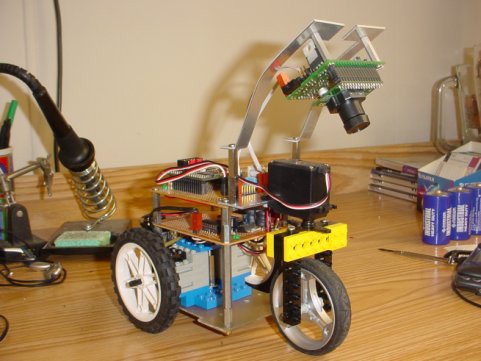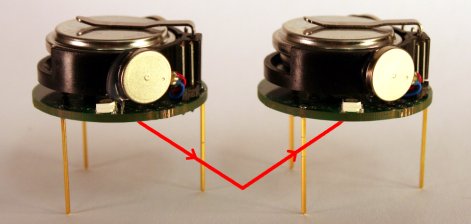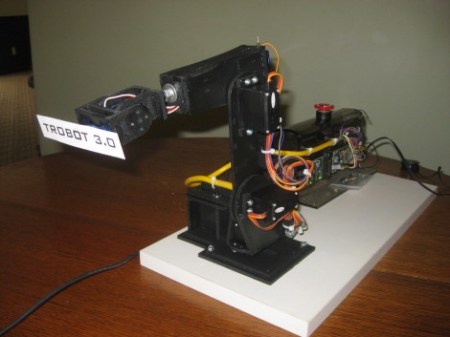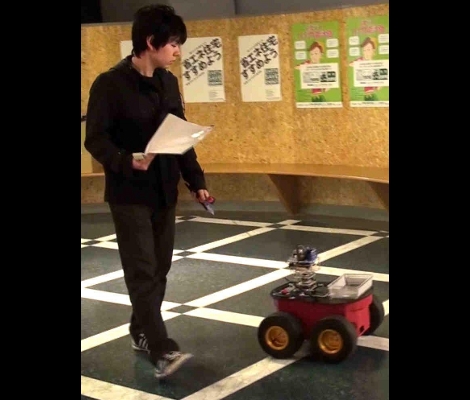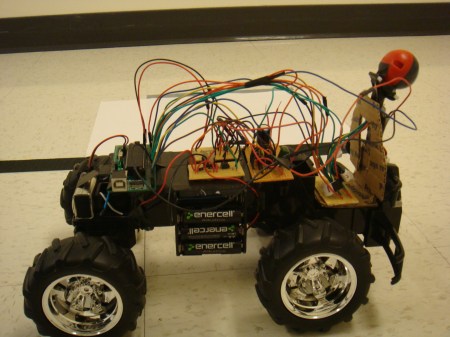
This autonomous remote control-style car from Cornell students was designed for a senior level engineering course there. It’s main “sensor” is a low-res webcam style camera. As shown in the video after the break, this car does quite well staying within two black lines on a white surface using it’s vision processing. It also has an IR sensor to detect objects in front of the car and stop without crashing.
All “vision” computations are handled by an Atmel Mega644 MCU, an 8-bit processor. Because of the processing limits of this chip, much work had to be done to make this process computationally efficient. These students go through an incredibly detailed account of their project, focusing on the code and electrical design. Check out the video of their car in action after the break. Continue reading “An Autonomous Car Using A “Webcam””

